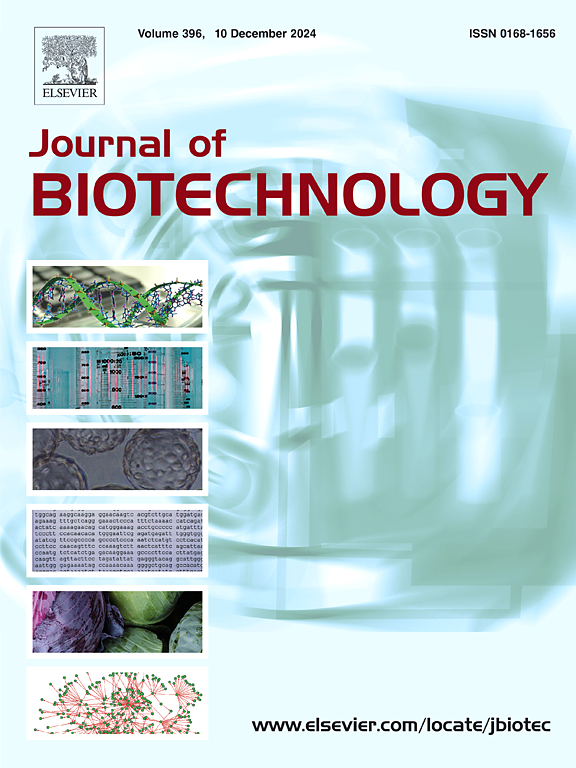Bifunctional chimeras of myeloperoxidase and glucose oxidase. Antimicrobial, topological and enzymatic properties
IF 4.1
2区 生物学
Q2 BIOTECHNOLOGY & APPLIED MICROBIOLOGY
引用次数: 0
Abstract
Enhancing the local substrate concentration is a crucial strategy in nature for facilitating the proximity of two enzymes. The substrate of the first enzyme is transformed into a by-product that travels to the active site of the second enzyme without external diffusion, then transformed into a product and eventually expelled from the complex. In an effort to optimize the antimicrobial properties of myeloperoxidase from Rhodopirellula baltica (RbMPO), we created a library of fused chimeras between a glucose oxidase (GOx) and RbMPO so that H2O2 could be continuously perfused in the vicinity RbMPO, enabling the production of HOCl or HOSCN, well-known antimicrobial agents. The enzymes were characterized biochemically, enzymatically, and physically using low-resolution techniques such as AFM, SAXS, and cryofracture. SAXS experiments revealed that the chimeras were properly folded and existed in different oligomeric states. The kinetic parameters of the chimeras were determined and used for classification, revealing that all chimeras exhibited varying levels of activity and were microbicidal. The mixture of different oligomeric states of LEGGEAEA displayed both activity and microbicidal properties. AFM was used to visualize the chimeras in different oligomeric states, with their overall shapes ranging from round, oblong, to hooked, depending on the linker used.
髓过氧化物酶和葡萄糖氧化酶的双功能嵌合体。抗菌,拓扑和酶的性质。
提高局部底物浓度是促进两种酶接近的关键策略。第一种酶的底物被转化为副产物,在没有外部扩散的情况下到达第二种酶的活性位点,然后转化为产物,最终从复合物中排出。为了优化波罗的海Rhodopirellula baltica髓过氧化物酶(RbMPO)的抗菌性能,我们建立了葡萄糖氧化酶(GOx)和RbMPO之间的融合嵌合体文库,使H2O2可以连续灌注到RbMPO附近,从而产生HOCl或HOSCN这两种众所周知的抗菌药物。利用AFM、SAXS和低温骨折等低分辨率技术对酶进行了生化、酶学和物理表征。SAXS实验表明,嵌合体折叠正确,并以不同的低聚态存在。测定了嵌合体的动力学参数并进行了分类,结果表明,所有嵌合体都表现出不同程度的活性,并具有杀微生物作用。不同低聚态的LEGGEAEA混合物显示出活性和杀微生物性能。AFM用于可视化嵌合体在不同的低聚状态,其整体形状范围从圆形,长方形,钩状,取决于所使用的连接。
本文章由计算机程序翻译,如有差异,请以英文原文为准。
求助全文
约1分钟内获得全文
求助全文
来源期刊

Journal of biotechnology
工程技术-生物工程与应用微生物
CiteScore
8.90
自引率
2.40%
发文量
190
审稿时长
45 days
期刊介绍:
The Journal of Biotechnology has an open access mirror journal, the Journal of Biotechnology: X, sharing the same aims and scope, editorial team, submission system and rigorous peer review.
The Journal provides a medium for the rapid publication of both full-length articles and short communications on novel and innovative aspects of biotechnology. The Journal will accept papers ranging from genetic or molecular biological positions to those covering biochemical, chemical or bioprocess engineering aspects as well as computer application of new software concepts, provided that in each case the material is directly relevant to biotechnological systems. Papers presenting information of a multidisciplinary nature that would not be suitable for publication in a journal devoted to a single discipline, are particularly welcome.
 求助内容:
求助内容: 应助结果提醒方式:
应助结果提醒方式:


